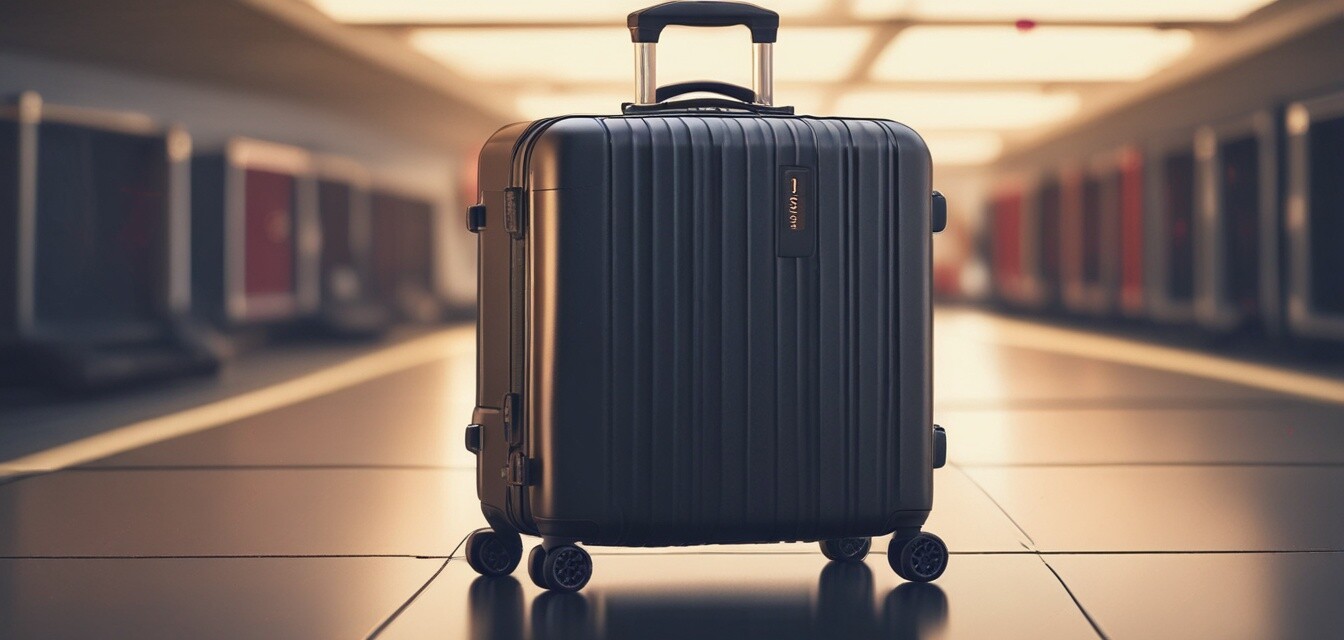
Ensuring Your Smart Luggage is Airline Approved
Key Takeaways
- Airline regulations vary, so check individual airline policies.
- Prioritize size, weight, and battery compliance when choosing smart luggage.
- Look for user-friendly features that enhance your travel experience.
- Remember that smart luggage also offers important tracking features for peace of mind.
When it comes to traveling efficiently, ensuring that your smart luggage complies with airline regulations is vital. These modern pieces of equipment, equipped with GPS technology, offer convenience but can also lead to complications if not used correctly with airlines. In this guide, we will explore what features to look for in your smart luggage to ensure it’s airline approved and how to navigate travel regulations seamlessly.
Understanding airline regulations
Before packing your bags, it’s essential to familiarize yourself with the various airline regulations surrounding luggage. Each airline has specific guidelines, and understanding them can save you from unexpected issues at the airport:
| Airline | Carry-On Size | Checked Luggage Size | Battery Regulations |
|---|---|---|---|
| Airline A | 22" x 14" x 9" | 62" linear inches | Litium-ion batteries ≤ 100 Wh |
| Airline B | 24" x 16" x 10" | 60" linear inches | Litium-ion batteries ≤ 160 Wh |
| Airline C | 21" x 15" x 7" | 70" linear inches | Litium-ion batteries ≤ 100 Wh |
Always verify the specific regulations for the airline you are flying with. It’s common for regulations to change, so checking close to your departure date is advisable.
Key features to look for in smart luggage
Choosing the right smart luggage requires attention to several key features. Here are some essentials to consider:
- Size compliance: Ensure the dimensions meet airline requirements for both carry-on and checked luggage.
- Weight restrictions: Check how much the luggage weighs when empty. Many airlines impose weight restrictions on checked luggage.
- Battery specifications: Verify the size and type of battery used in your smart luggage. Most airlines accept lithium-ion batteries, but only if they are within specified watt-hour limits.
- Style and security: Look for zippers and locks that deter theft while complying with travel regulations.
- GPS tracking: Opt for luggage that has GPS tracking capabilities, providing peace of mind and easy location tracking during your travels.
Types of smart luggage
There are several types of smart luggage to choose from. Understanding these categories can help narrow down your selection:
- Carry-On Luggage: Ideal for short trips, these bags usually meet standard carry-on requirements and are equipped with useful tracking features.
- Checked Luggage: Larger suitcases made to meet airline specifications for checked baggage.
- Backpacks: Great for day trips or as a personal item, these often contain integrated tech features.
- Duffle Bags: Easy to pack and carry, many modern duffel bags now also come with smart features.
Importance of GPS tracking in smart luggage
GPS tracking technology has revolutionized the way we manage our luggage while traveling. Here’s why it’s so beneficial:
- Provides real-time location updates, mitigating the stress of lost luggage.
- Many devices can link to your smartphone for easy access to tracking info.
- Ability to find your luggage’s location even when it’s out of your sight.
Integrating GPS tracking into your travel routine can profoundly enhance your travel experience. If you want to know more about how to maximize your luggage's tracking features, consider exploring our Travel Tips category for more insights.
Tips for using smart luggage effectively
Beginners Section
- Before your trip, familiarize yourself with your luggage’s features.
- Have a backup plan for tracking your luggage, such as a mobile app or a printed tag.
- Charge your smart luggage battery fully before your travel to avoid complications.
- Label your luggage clearly with your contact information.
Caring for your smart luggage
Longevity is crucial when investing in smart luggage. Here are some guidelines to follow to take care of your luggage:
- Regularly clean your luggage’s exterior to prevent wear and tear.
- Keep zippers and locks functioning well with occasional maintenance.
- Store it properly when not in use to avoid any unwanted damage.
Pros
- Smart luggage saves time with quick tracking.
- Durability and safety give travelers confidence.
- Integrated tech offers convenience during travels.
Cons
- Could be more expensive than traditional luggage.
- Battery limitations may affect some models.
- Potential compliance issues with some airlines.
Conclusion
Smart luggage offers fantastic features that enhance the travel experience, but it’s crucial to ensure compliance with airline regulations. Focusing on key factors such as size, weight, battery specifications, and GPS capabilities can significantly improve your travel experience. Remember to always check the latest airline policies and care for your luggage properly. These steps not only help you stay compliant but also enhance the reliability and efficiency of your travel journey.
For more tips about safe and efficient travel, check out our Buying Guides or dive into our Travel Accessories page to find the perfect travel companions.